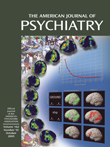Dopaminergic Abnormalities in Select Thalamic Nuclei in Schizophrenia: Involvement of the Intracellular Signal Integrating Proteins Calcyon and Spinophilin
Abstract
OBJECTIVE: While both thalamic abnormalities and dopaminergic dysregulation have been separately implicated in the pathophysiology of schizophrenia, little is known about the possible dysfunction of molecules associated with dopaminergic neurotransmission in the thalamus in this illness. In this study, the authors studied this question by measuring in postmortem brain the expression of molecules associated with dopaminergic neurotransmission. METHOD: Using in situ hybridization and receptor autoradiography, the authors determined in schizophrenia and comparison subjects 1) thalamic expression of the transcripts encoding the five dopamine receptors; 2) binding to the dopamine D1, D2, and D3 receptors; 3) monoaminergic innervation as assessed by binding to the vesicular monoamine transporter; and 4) transcripts encoding three dopamine receptor-associated intracellular proteins (calcyon, spinophilin, and DARPP-32) that mediate integration of dopaminergic signaling with other neurotransmitter systems. RESULTS: Both calcyon and spinophilin transcripts were significantly elevated in schizophrenia subjects. Monoaminergic innervation, as well as dopamine receptor transcripts and binding sites, were unaffected in this illness. CONCLUSIONS: These data indicate that there are dopaminergic abnormalities in the thalamus in schizophrenia but that they are at the level of intracellular integration of dopamine signaling with other neurotransmitter systems, likely including glutamate, in thalamic neurons.



